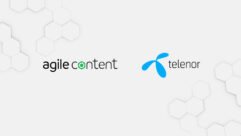Higher Education Explores Digital Content Delivery Options
Feb 21, 2007 12:46 PM,
By Linda Seid Frembes
Colleges and universities have driven early AV technology adoption for decades thanks to well-established fundraising techniques and constant investments in infrastructure. As the AV market moves into digital territory, early-adopters are once again forging a trail to explore the best options of digital content delivery from the classroom to the greater campus and beyond.
Digital recordings of higher-education classroom lectures have risen in popularity recently. An audio or video recording of a lecture serves as the modern-day version of taking notes in class. Students can use the files to review a particular topic or to assist themselves in the pursuit of self-directed learning techniques. Open access beyond the college campus is also beneficial. K-12 students who have access to higher-education classroom lectures can be better prepared for the academic challenges they face in the near future.
Perhaps the granddaddy of open digital access is Cambridge, MA-based MIT’s OpenCourseWare (OCW). The idea of MIT OCW began in 1999, when MIT Provost Robert Brown asked a committee of faculty, students, and school administrators for guidance on how the school should position itself in the emerging e-learning environment. Since then, MIT OCW has grown into a Web-based publication of educational materials from 1,550 MIT courses including syllabi, lecture notes, course calendars, problem sets and solutions, exams, reading lists, and a selection of video lectures. The selection represents 34 departments and all five of MIT’s schools. The MIT OCW initiative will include materials from virtually all courses by 2008. OCW is funded jointly by the William and Flora Hewlett Foundation, the Andrew W. Mellon Foundation, MIT, and support of the Ab Initio software.
More recently, Yale University in New Haven, Conn., was the latest to announce it would offer classroom lectures in a digital format. Last September, Yale said it would offer digital videos of some undergraduate course lectures for free on the Internet. The university will also include transcripts in several languages in an effort to bring more accessibility to the private (and expensive) school. The 18-month pilot project, called The Open Educational Resources Video Lecture Project, was made possible by a $755,000 grant from the William and Flora Hewlett Foundation.
“The Hewlett Foundation is committed to making high-quality educational content and tools freely available on the web by partnering with leading universities,” says Marshall Smith, director of the Hewlett Foundation’s Education Program. “Yale’s commitment to open educational resources is a very important contribution to this goal.” According to the written announcement from the university, Yale will be the first university to tap the potential of digital video by combining course architecture with essentially complete sets of lectures from these courses, as presented by its faculty.
Some caveats do exist, however. Yale’s initiative will cover seven courses beginning in the 2007 academic year; following the courses does not mean credit towards a degree from Yale. “This is a wonderful opportunity for us to share a vital and central part of the Yale experience with those who, for whatever reason, are not in a position to pursue a Yale education at first hand,” says Yale University President Richard C. Levin, at the time of the announcement.
The first seven Yale courses will be produced between September 2006 and June 2007 and will be available online starting in the Fall of 2007. Yale will create a dedicated web site to provide access to the lecture videos and all other course materials. This site, which will become operational in fall 2007, will be linked to www.yale.edu.
While such noteworthy universities such as MIT and Yale are spearheading their own digital recording and delivery initiatives, companies serving the education market are also offering an alternative to that route. Apple’s iTunes launched a free, hosted service for colleges and universities called iTunes U in early 2006. Based on the same technology as the popular iTunes Store, iTunes U allows colleges and universities to upload course content and customize the pages with school logos and colors. Students can download the content to their Macs or PCs or transfer it to their iPod. Students can also upload their own content to share via the service.
Industry analysts have speculated whether this move by Apple is another way to secure the position of the ubiquitous iPod on campuses around the country. Arguably, the iPod has and continues to thrive on campuses without the need for an educational purpose. Services such as iTunes U can benefit students by presenting coursework using technology they are familiar with; however, students without the means to purchase the expensive gadgets are at a disadvantage.
From the university perspective, iTunes U can offer a stable, established infrastructure to a university that may not have the resources to develop their own. Interested parties should research the fine print though. Apple states that “universities must enter into an iTunes U Service Agreement before being eligible to use the iTunes U service. Apple reserves the right to determine eligibility” and also notes that “in order to integrate iTunes U with a campus environment, a university should expect to perform some level of development and system integration work.”










